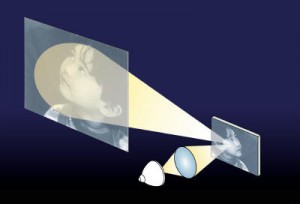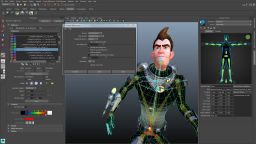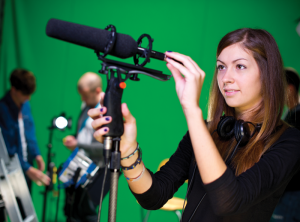
“How Projection Television Works.” HowStuffWorks. N.p., n.d. Web. 02 Apr. 2014.
HOLLYWOOD’S SECRETS REVEALED: SPECIAL EFFECTS IN THE MOVIES
Author: Scott Anderson Date published: 10/01/1998
This article talks about the different kinds of effects from over the years and how they were done. Blood, blue-screen, rear projection, glass painting, miniatures, and effects using only computers were all talked about during the article. For computer effects, they used Jurassic Park as an example explaining how the dinosaurs were made. They used fossils to make them accurate, using those they made a computerized skeleton and finally they added muscles and skin. After thousands of frames the dinosaur was finally brought to life. Alfred Hitchcock used rear projection in many of his films, Norman O. Dawn used glass painting to help make crumbling buildings look more realistic. Miniatures are creations of things that exist or don’t exist that the filmer can’t get their hands on, like the jabberwocky from Alice in Wonderland.
I learned what a squib was and how it’s used for video. It’s a tiny explosive, often times put under an actors costume, when detonated it can give the effect of someone being shot. I already knew about blue-screen, which is basically green screen. Rear projection computer effects, and miniatures I got the gist of but I can’t see how those would be used in my filming because they seem like they use I lot of expensive equipment that I do not have. Lastly, glass painting I didn’t quite understand but the basic concept of using painted glass in front of the camera lens seems like a good idea.
In upcoming video projects I want to use fake blood, maybe for a trailer of a zombie movie or in an action sequence. I always thought it would be difficult to try to set up tubing on the actor for a bloody effect, but now I know that there are easy ways to attach it to a knife or scissors. Even though I won’t be making digital dinosaurs for my movies, I think I might take some of the basic ideas from the other examples. Like putting painted glass in front of the camera to create an effect.
Article: http://www.videomaker.com/article/3550-hollywoods-secrets-revealed-special-effects-in-the-movies
 Well Autodesk is know for not being one of the industry’s giants, but for all the technology they come out with. They just announced that in 2015 they will be come out with an updated creation suit.
Well Autodesk is know for not being one of the industry’s giants, but for all the technology they come out with. They just announced that in 2015 they will be come out with an updated creation suit.


